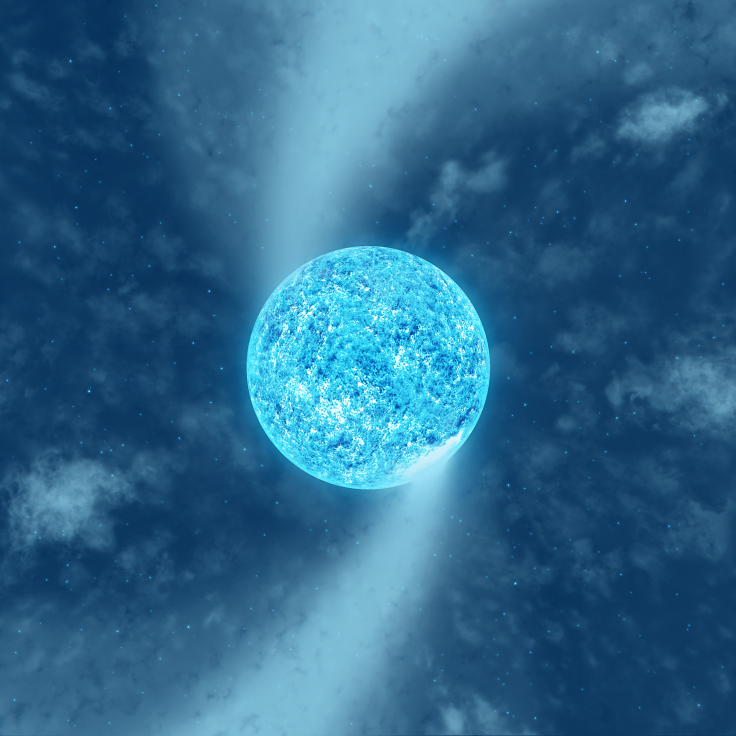Surface Spots On Lone Supergiant Star Creating Stellar Wind Spirals

Hot massive stars, called supergiants, play a critical role in the evolution of the universe by injecting the interstellar medium with heavy elements when they go supernova. These elements are the building blocks for everything from stars to planets and even life as we know it.
One such supergiant is called Zeta Puppis, or Naos, and is located about 1,100 light-years away from Earth. It is 60 times more massive than the sun, with a surface that is seven times hotter, and it is moving through the Milky Way at the speed of 60 kilometers (about 37 miles) a second. It is an unusual supergiant, since they are usually found in pairs (binary systems) or groups (multiple systems) but Zeta Puppis is a lone ranger. And now, scientists have found a connection between the spots on its surface and its stellar wind.
By simultaneously monitoring both the star’s surface brightness and it stellar wind over six months, astronomers discovered that as the supergiant spins along its axis during its 1.78-day rotation period, the star’s wind has the same periodicity. Further, "wind clumps" — regions of higher density within the stellar wind — are starting to form at the base of the wind, induced by some kindof random variation on the surface of Zeta Puppis.
Tahina Ramiaramanantsoa, a PhD student at the Université de Montréal, Canada, who led the research, said in a statement Tuesday: "The observations revealed a repeated pattern every 1.78 days, both at the surface of the star and in the stellar wind. The periodic signal turns out to reflect the rotation of the star through giant 'bright spots' tied to its surface, which are driving large-scale spiral-like structures in the wind, dubbed 'co-rotating interaction regions' or 'CIRs.' By studying the light emitted at a specific wavelength by ionized helium from the star’s wind, we clearly saw some 'S' patterns caused by arms of CIRs induced in the wind by the bright surface spots!"
The observations were made using the Bright Target Explorer (BRITE) network of six nanosatellites, as well as several ground-based observatories, both professional and amateur. Robert Harmon from Ohio Wesleyan University wrote the program that mapped the star’s surface, showing the locations of the bright spots.
Zeta Puppis likely became a solitary supergiant due to past interaction with a binary or multiple system. That would have thrown the star into space at a high velocity, which is consistent with the new observations.
Ian Stevens from the University of Birmingham, United Kingdom, who was a part of the research team, said in another statement: “Zeta Pup will become either a black hole or a neutron star at the end of its life. In that regard, it is interesting to realize that, if Zeta Pup had survived its past interactions within a massive binary system, it would have been a perfect candidate for the generation of gravitational-wave signals from the coalescence of a pair involving any combination of stellar-mass black holes or neutron stars in the future!”
What causes the bright surface spots on Zeta Puppis and random variations in its brightness is still not known, however.
The researchers published their paper, titled "BRITE-Constellation high-precision time-dependent photometry of the early-O-type supergiant ζ Puppis unveils the photospheric drivers of its small- and large-scale wind structures," recently in the journal Monthly Notices of the Royal Astronomical Society.
© Copyright IBTimes 2024. All rights reserved.





















